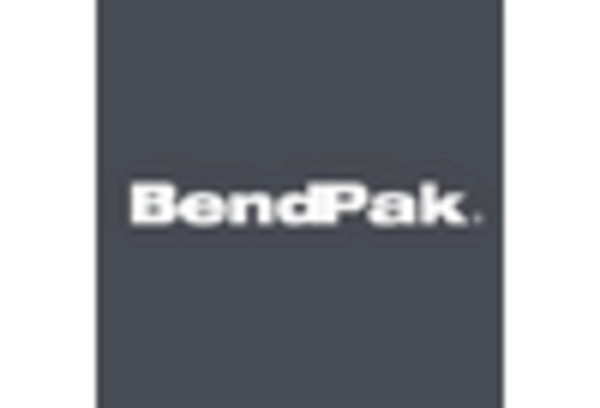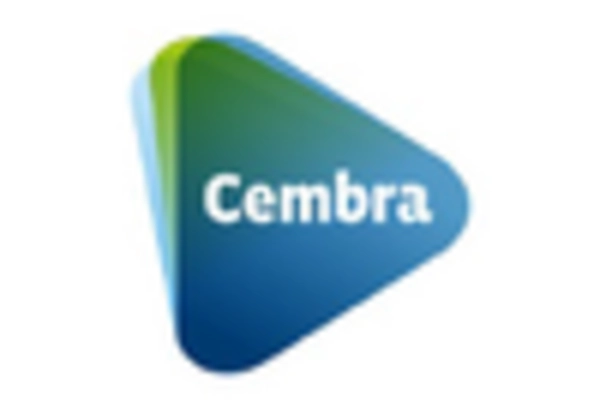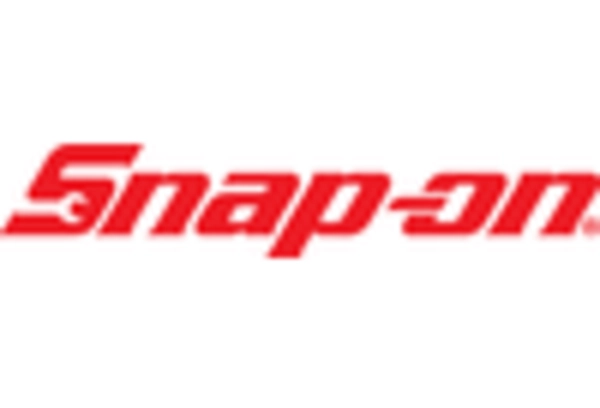Technological Innovations
Technological advancements in wheel alignment equipment are significantly influencing the Wheel Aligner Equipment Market. Innovations such as 3D alignment systems and advanced diagnostic tools are enhancing the precision and efficiency of alignment services. These technologies not only reduce the time required for alignment but also improve the accuracy of the results, leading to better vehicle performance and safety. The market for these advanced systems is projected to grow, with estimates suggesting a compound annual growth rate of around 5% over the next few years. As automotive service providers seek to remain competitive, the adoption of cutting-edge wheel alignment technology is likely to become a critical factor in their operational strategies.
Increasing Vehicle Ownership
The rise in vehicle ownership across various regions appears to be a primary driver for the Wheel Aligner Equipment Market. As more individuals acquire vehicles, the demand for maintenance services, including wheel alignment, is likely to increase. According to recent data, the number of registered vehicles has shown a steady growth rate of approximately 3% annually. This trend suggests that automotive service providers will need to invest in advanced wheel alignment equipment to cater to the growing customer base. Consequently, the Wheel Aligner Equipment Market is expected to experience a corresponding surge in demand, as service centers strive to enhance their operational efficiency and service quality to meet consumer expectations.
Expansion of Automotive Service Centers
The expansion of automotive service centers is another key driver for the Wheel Aligner Equipment Market. As the automotive repair and maintenance sector continues to grow, more service centers are being established to cater to the increasing number of vehicles on the road. This expansion is likely to create a higher demand for wheel alignment equipment, as new service providers seek to offer comprehensive maintenance solutions. Market data indicates that the number of automotive service centers has increased by approximately 4% annually, suggesting a robust growth trajectory. Consequently, the Wheel Aligner Equipment Market stands to benefit from this trend, as service centers invest in modern equipment to attract and retain customers.
Rising Awareness of Vehicle Maintenance
There is a growing awareness among vehicle owners regarding the importance of regular maintenance, which is driving the Wheel Aligner Equipment Market. Consumers are increasingly recognizing that proper wheel alignment can enhance vehicle safety, improve fuel efficiency, and extend tire life. This heightened awareness is reflected in the increasing number of service appointments for wheel alignment, with reports indicating a rise of approximately 10% in service requests over the past year. As more vehicle owners prioritize maintenance, the demand for high-quality wheel alignment equipment is expected to rise, prompting service centers to invest in advanced technologies to meet customer needs.
Regulatory Standards and Safety Regulations
Regulatory standards and safety regulations are playing a crucial role in shaping the Wheel Aligner Equipment Market. Governments and regulatory bodies are increasingly emphasizing the importance of vehicle safety, which includes proper wheel alignment as a critical factor. Compliance with these regulations often necessitates the use of advanced wheel alignment equipment, prompting service providers to upgrade their tools and technologies. As a result, the market for wheel aligners is expected to grow, driven by the need for compliance and the desire to enhance service quality. Recent data suggests that regions with stringent safety regulations are witnessing a faster adoption of advanced wheel alignment technologies, further propelling the market forward.


















Leave a Comment